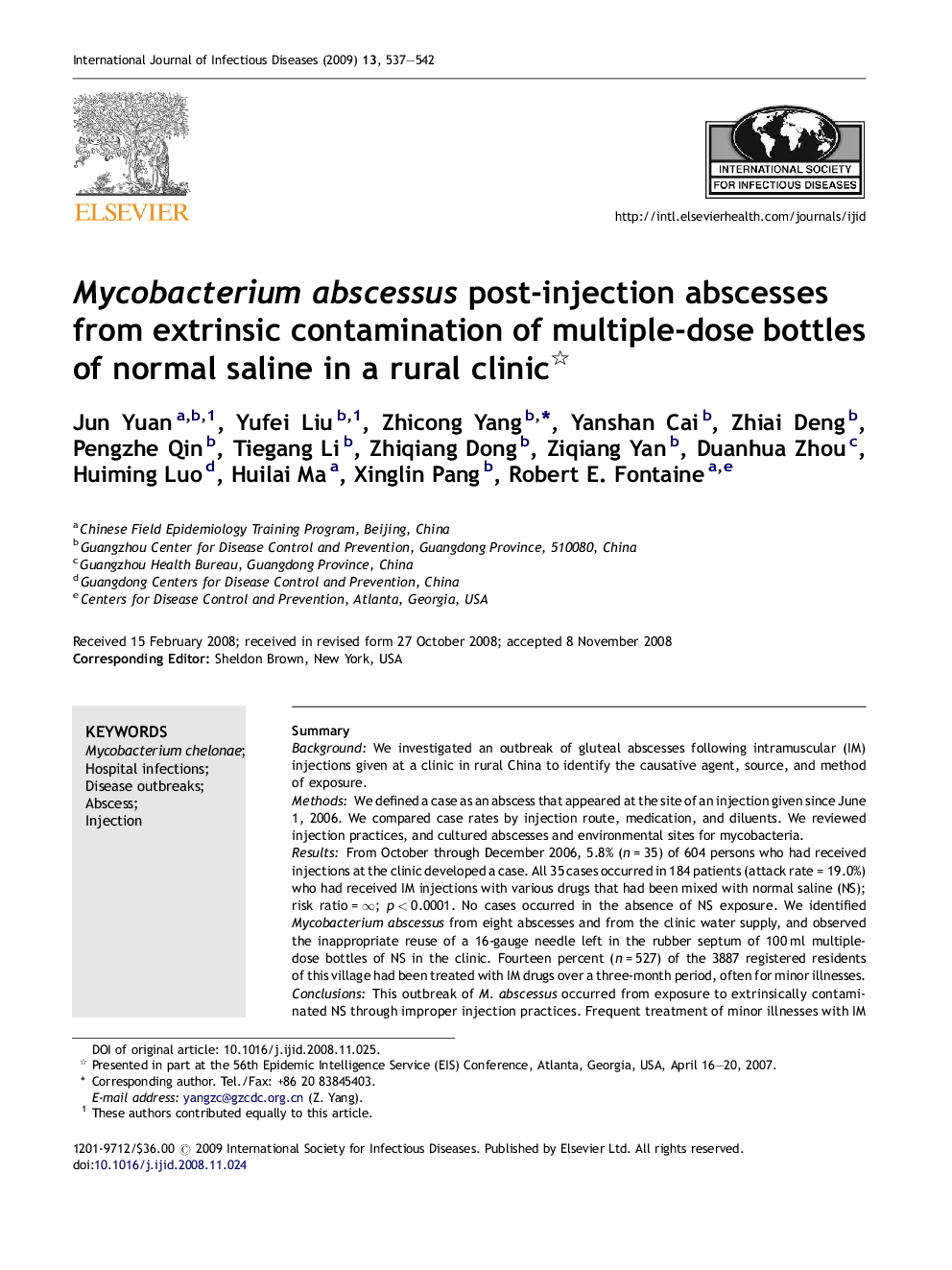| Article ID | Journal | Published Year | Pages | File Type |
|---|---|---|---|---|
| 3364397 | International Journal of Infectious Diseases | 2009 | 6 Pages |
SummaryBackgroundWe investigated an outbreak of gluteal abscesses following intramuscular (IM) injections given at a clinic in rural China to identify the causative agent, source, and method of exposure.MethodsWe defined a case as an abscess that appeared at the site of an injection given since June 1, 2006. We compared case rates by injection route, medication, and diluents. We reviewed injection practices, and cultured abscesses and environmental sites for mycobacteria.ResultsFrom October through December 2006, 5.8% (n = 35) of 604 persons who had received injections at the clinic developed a case. All 35 cases occurred in 184 patients (attack rate = 19.0%) who had received IM injections with various drugs that had been mixed with normal saline (NS); risk ratio = ∞; p < 0.0001. No cases occurred in the absence of NS exposure. We identified Mycobacterium abscessus from eight abscesses and from the clinic water supply, and observed the inappropriate reuse of a 16-gauge needle left in the rubber septum of 100 ml multiple-dose bottles of NS in the clinic. Fourteen percent (n = 527) of the 3887 registered residents of this village had been treated with IM drugs over a three-month period, often for minor illnesses.ConclusionsThis outbreak of M. abscessus occurred from exposure to extrinsically contaminated NS through improper injection practices. Frequent treatment of minor illnesses with IM injections of antibiotics was likely an important contributing factor to the size of this outbreak.
